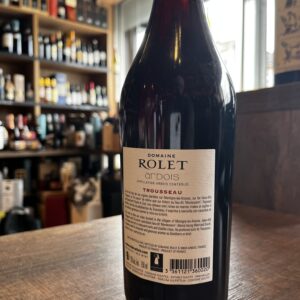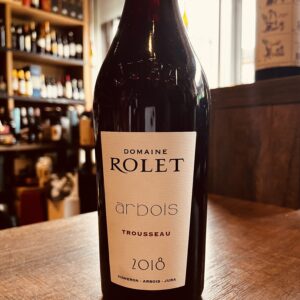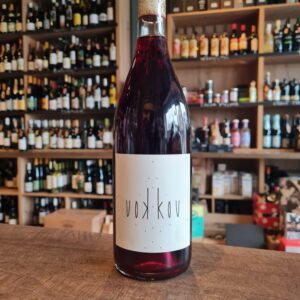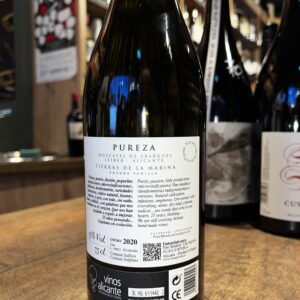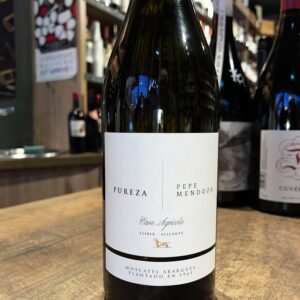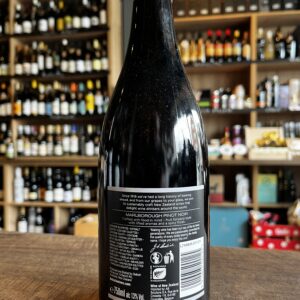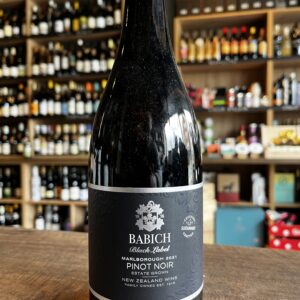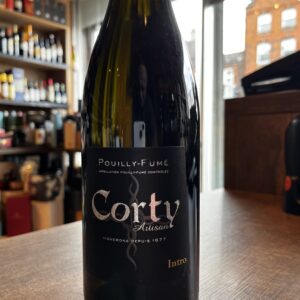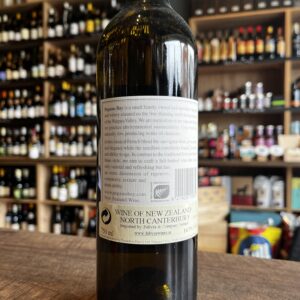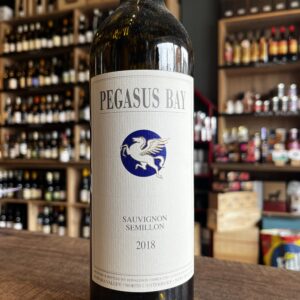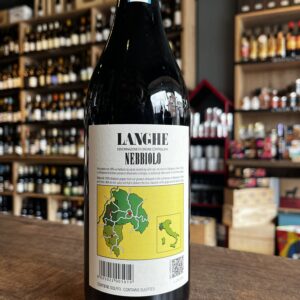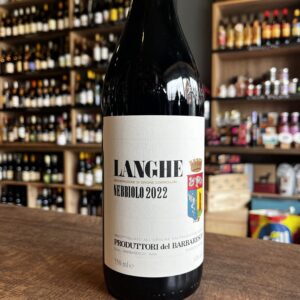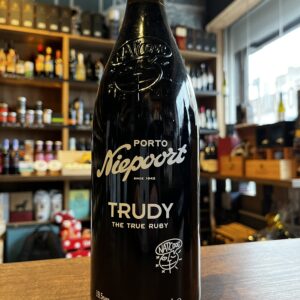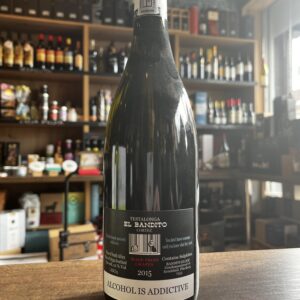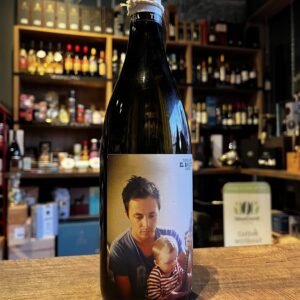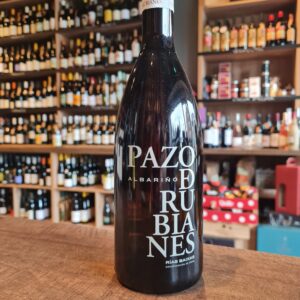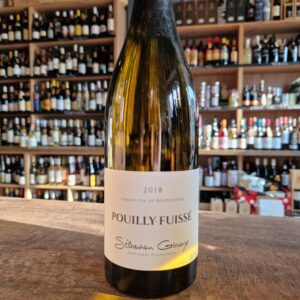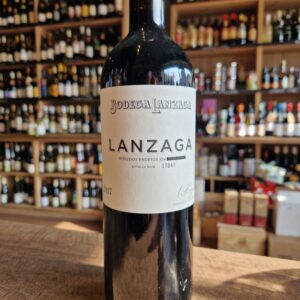-
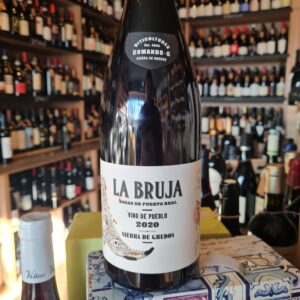 Daniel Landi and Fernando García have been friends since college. Successful winemakers in their own right – Dani at his family’s estate, Bodegas Jimenez-Landi and Fer at Bodega Marañones - in 2008 they started a winemaking project together: Comando G. Along with the pioneers of Priorat, Dani and Fer are redefining Garnacha, previously viewed as a workhorse variety, into something that can rival the elegance and finesse of Burgundian Pinot Noir or Syrah in the northern Rhône. The duo work with several small, isolated plots perched high up in the mountainous Sierra de Gredos to create truly unique, terroir-expressive wines. The vineyards that Daniel and Fernando have assembled are all farmed biodynamically, with vines ranging in age from 50 to 80 years old. According to Wine Advocate writer Luis Gutierrez, "they improve their vineyards from the moment they buy or rent them [...] The quality of their wines is what they strive to improve the most, and the results are there.” In the winery their winemaking is considered and precise, gently coaxing out the delicate balance of fruit character and terroir from each site. It is this commitment to a sense of place, nuance, and finesse that make their wines among the most compelling in Spain.
Daniel Landi and Fernando García have been friends since college. Successful winemakers in their own right – Dani at his family’s estate, Bodegas Jimenez-Landi and Fer at Bodega Marañones - in 2008 they started a winemaking project together: Comando G. Along with the pioneers of Priorat, Dani and Fer are redefining Garnacha, previously viewed as a workhorse variety, into something that can rival the elegance and finesse of Burgundian Pinot Noir or Syrah in the northern Rhône. The duo work with several small, isolated plots perched high up in the mountainous Sierra de Gredos to create truly unique, terroir-expressive wines. The vineyards that Daniel and Fernando have assembled are all farmed biodynamically, with vines ranging in age from 50 to 80 years old. According to Wine Advocate writer Luis Gutierrez, "they improve their vineyards from the moment they buy or rent them [...] The quality of their wines is what they strive to improve the most, and the results are there.” In the winery their winemaking is considered and precise, gently coaxing out the delicate balance of fruit character and terroir from each site. It is this commitment to a sense of place, nuance, and finesse that make their wines among the most compelling in Spain. -
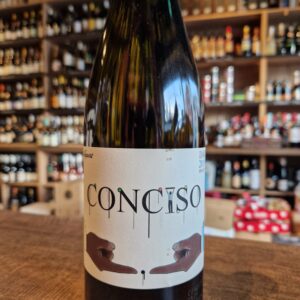 With the Conciso Branco, Niepoort have once again succeeded in creating a fresh and elegant white wine from the Dão region which shows off the potential of its old vines and granite terroir. The grapes come from the Quinta da Lomba, which has exceptionally old vineyards, with some vines being almost a century old with average altitude of 80 meters above sea level. These sites are planted predominantly with Bical, Encruzado and Malvasia, among other indigenous grape varieties of the region. Suggested dishes featuring cod and other oily fish. Pairs well with local sausages and is a great accompaniment for cheese from the “Serra da Estrela” or other buttery creamy cheeses.
With the Conciso Branco, Niepoort have once again succeeded in creating a fresh and elegant white wine from the Dão region which shows off the potential of its old vines and granite terroir. The grapes come from the Quinta da Lomba, which has exceptionally old vineyards, with some vines being almost a century old with average altitude of 80 meters above sea level. These sites are planted predominantly with Bical, Encruzado and Malvasia, among other indigenous grape varieties of the region. Suggested dishes featuring cod and other oily fish. Pairs well with local sausages and is a great accompaniment for cheese from the “Serra da Estrela” or other buttery creamy cheeses. -
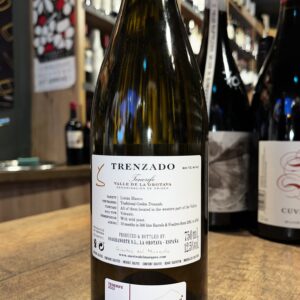
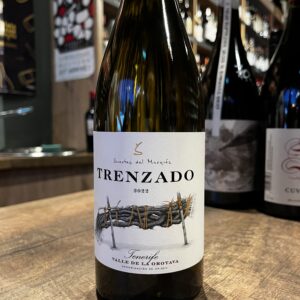 Trenzado takes its name from a local vine training method called Cordon Trenzado, in which the branches of the vine are almost braided together and supported on stakes (as pictured on the label). Tenerife has a long and fascinating winemaking history, indigenous varieties such as Listán Negro and Blanco, Tintilla and Baboso Negro. Many vineyards are made up of 100 year-old+ ungrafted vines. Jonatan Garcia runs the family winery that is located in the Orotava Valley on the north side of the island. Many are grown in a traditional trellising system called Cordon Trenzado - vine branches are braided together and supported on stakes, and eventually grow into gnarly arms sometimes several meters in length. The estate has some incredibly old, low-yielding vines and produce wines that have freshness, balance, purity of fruit, minerality and an authentic terroir character. A beautiful wine, perfect for the seasoned Chardonnay drinker, seeking to try something a different. Pair it with grilled fish dishes, shellfish and crustaceans; also well paired with stewed white meats
Trenzado takes its name from a local vine training method called Cordon Trenzado, in which the branches of the vine are almost braided together and supported on stakes (as pictured on the label). Tenerife has a long and fascinating winemaking history, indigenous varieties such as Listán Negro and Blanco, Tintilla and Baboso Negro. Many vineyards are made up of 100 year-old+ ungrafted vines. Jonatan Garcia runs the family winery that is located in the Orotava Valley on the north side of the island. Many are grown in a traditional trellising system called Cordon Trenzado - vine branches are braided together and supported on stakes, and eventually grow into gnarly arms sometimes several meters in length. The estate has some incredibly old, low-yielding vines and produce wines that have freshness, balance, purity of fruit, minerality and an authentic terroir character. A beautiful wine, perfect for the seasoned Chardonnay drinker, seeking to try something a different. Pair it with grilled fish dishes, shellfish and crustaceans; also well paired with stewed white meats -
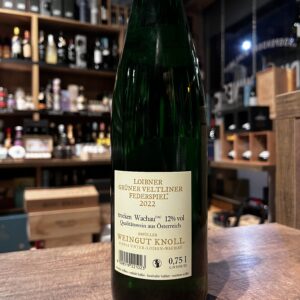
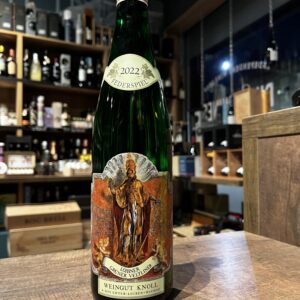 Weingut Knoll dates from the 1950’s based in Unter-Loeben on the banks of the Danube in the heart of the Wachau. The famous baroque image of Saint Urban has graced its labels from 1962. Emmerich Knoll farms 16 hectares of vines in some of the best sites, the Loibner Gruner Veltliner comes from two vineyards on the lower flatter slopes of the steeply terraced Loibenberg hillside close to the Danube. This flat land has an elevation of about 200m. The soils include the floodplain, with sand on Danube gravel. Vines are 25 years old on average (ranging from 5 to 45 years) and are planted at 3,500-4,000 per hectare. Pair it with Fish chicken, goose, turkey snack
Weingut Knoll dates from the 1950’s based in Unter-Loeben on the banks of the Danube in the heart of the Wachau. The famous baroque image of Saint Urban has graced its labels from 1962. Emmerich Knoll farms 16 hectares of vines in some of the best sites, the Loibner Gruner Veltliner comes from two vineyards on the lower flatter slopes of the steeply terraced Loibenberg hillside close to the Danube. This flat land has an elevation of about 200m. The soils include the floodplain, with sand on Danube gravel. Vines are 25 years old on average (ranging from 5 to 45 years) and are planted at 3,500-4,000 per hectare. Pair it with Fish chicken, goose, turkey snack -
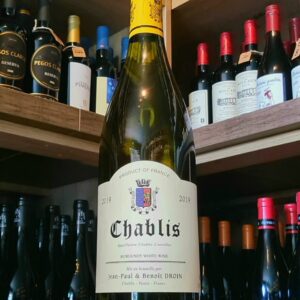 Benoît Droin is one of the most respected winemakers in Chablis. This is the entry point to his range; it highlights the potential of “lesser” wines from top producers. It’s from two parcels, both on Portlandian limestone on the plateau above the Grands Crus. Balanced approach pest control. Soils maintained via regular ploughing. The soils are generally shallow. The sub-soil alternates between grey marl and bands of limestone sometimes very rich in "exogyra virgula" fossils - small, comma-shaped oysters characteristic of the marls from the Upper and Middle Kimmeridgian periods. Winemaking is entirely in steel, preserving the crystalline fruit and bright purity. The 2019 vintage adds a little more ripeness to the fruit on the nose, bringing aromas of white melon and hazelnut. The palate is generous on entry, with cleansing acidity and a gently smoky, mineral finish. This is excellent value and will outdo many “grander” wines. Pair it with aperitif, grilled seafood, baked white fish or Oysters
Benoît Droin is one of the most respected winemakers in Chablis. This is the entry point to his range; it highlights the potential of “lesser” wines from top producers. It’s from two parcels, both on Portlandian limestone on the plateau above the Grands Crus. Balanced approach pest control. Soils maintained via regular ploughing. The soils are generally shallow. The sub-soil alternates between grey marl and bands of limestone sometimes very rich in "exogyra virgula" fossils - small, comma-shaped oysters characteristic of the marls from the Upper and Middle Kimmeridgian periods. Winemaking is entirely in steel, preserving the crystalline fruit and bright purity. The 2019 vintage adds a little more ripeness to the fruit on the nose, bringing aromas of white melon and hazelnut. The palate is generous on entry, with cleansing acidity and a gently smoky, mineral finish. This is excellent value and will outdo many “grander” wines. Pair it with aperitif, grilled seafood, baked white fish or Oysters -
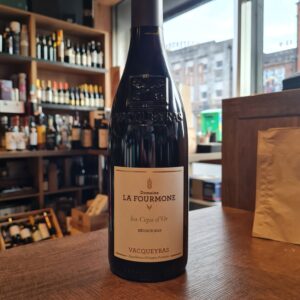 Domaine la Fourmone is a multi-generational domaine and is currently run by sister, Florentine and brother, Albin Combe. The property dates back to the mid-1700’s when it originally producing wheat. Wine began to be grown in the last 19th century and thent became the crop after Julien Combe purchased the property in 1910. The domaine cultivates 41 ha (104 acres) of vineyards of which, 20ha are in Vacqueyras, 10ha are in Gigondas and 7ha of Côtes-du-Rhône and IGP and 4ha of vines on the southern edge of the Dentelles hills that reside in the Ventoux appellation. “Les Ceps d’Or” comes from a blend of mainly Grenache and Mourvèdre. It expresses the imprint of the 50 years of our goblet-pruned vines. The berries are delicately harvested on the northern and eastern limits of the Vacqueyras appellation. The plots come from two islands located on the plateau of the appellation at the foothills of the Dentelles de Montmirail, a massif well known for its geological richness. The first islet is located in the Piedmont de Beauregard region. The soil is made up of dark beige marly silts, cut by broken slabs of Miocene molasses at a depth of one meter. This terroir requires a lot of effort from the vines to slide their rootlets into the cracks and deploy meters of roots. This effort gives the wine a singular complexity and aromatic richness. The second islet is located at the northern limit of the Cône de la Font des Papes terroir. A surface of light beige clay-sandy silt with small limestone fragments with a well-developed root profile up to two meters deep. The materials from this terroir have all the criteria favorable to the vine: freshness and good water reserve.
Domaine la Fourmone is a multi-generational domaine and is currently run by sister, Florentine and brother, Albin Combe. The property dates back to the mid-1700’s when it originally producing wheat. Wine began to be grown in the last 19th century and thent became the crop after Julien Combe purchased the property in 1910. The domaine cultivates 41 ha (104 acres) of vineyards of which, 20ha are in Vacqueyras, 10ha are in Gigondas and 7ha of Côtes-du-Rhône and IGP and 4ha of vines on the southern edge of the Dentelles hills that reside in the Ventoux appellation. “Les Ceps d’Or” comes from a blend of mainly Grenache and Mourvèdre. It expresses the imprint of the 50 years of our goblet-pruned vines. The berries are delicately harvested on the northern and eastern limits of the Vacqueyras appellation. The plots come from two islands located on the plateau of the appellation at the foothills of the Dentelles de Montmirail, a massif well known for its geological richness. The first islet is located in the Piedmont de Beauregard region. The soil is made up of dark beige marly silts, cut by broken slabs of Miocene molasses at a depth of one meter. This terroir requires a lot of effort from the vines to slide their rootlets into the cracks and deploy meters of roots. This effort gives the wine a singular complexity and aromatic richness. The second islet is located at the northern limit of the Cône de la Font des Papes terroir. A surface of light beige clay-sandy silt with small limestone fragments with a well-developed root profile up to two meters deep. The materials from this terroir have all the criteria favorable to the vine: freshness and good water reserve. -
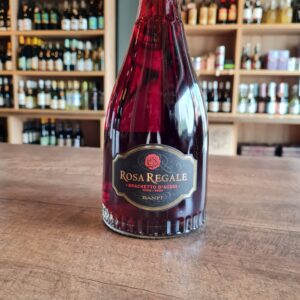 Rosa Regale is created in one of Italy's smallest production zones, the Brachetto d'Acqui DOCG. It is crafted 100% Brachetto grapes grown exclusively at the La Rosa Vineyard in the town of Acqui Terme located in the Piedmont Region of Italy. The Label features a single red rose, representing the wine's origin from this single vineyard La Rosa estate. This is a sweet, aromatic wine great for a celebration or a afternoon tea with friends. Pop open the bubbly, Enjoy!
Rosa Regale is created in one of Italy's smallest production zones, the Brachetto d'Acqui DOCG. It is crafted 100% Brachetto grapes grown exclusively at the La Rosa Vineyard in the town of Acqui Terme located in the Piedmont Region of Italy. The Label features a single red rose, representing the wine's origin from this single vineyard La Rosa estate. This is a sweet, aromatic wine great for a celebration or a afternoon tea with friends. Pop open the bubbly, Enjoy! -
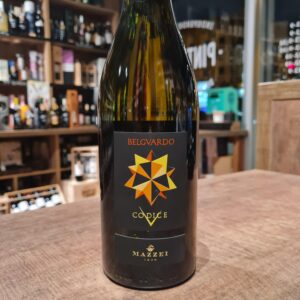 That of the Mazzei is one of the longest and most structured stories that wine Tuscany can give. A story that has as its fulcrum the Chianti Classico and precisely the Castello di Fonterutoli; today a modern cellar with 117 hectares of vineyards for a production of 800,000 bottles. But also a story, made up of great personalities such as, to stay in the near future, Lapo Mazzei, in a period of strong changes, at the same time lays the foundations of today's company. Today, at the helm of this company are the sons Filippi and Francesco who over time have achieved significant goals and given the company a broader scope starting with some acquisitions, even outside Tuscany. In the mid-90s, however, the Belguardo estate project in Maremma was born, with 34 hectares of vineyards. From here comes a non-trivial variation of Vermentino, now it has become the main vine of the Tuscan coast. The white Vermentino "Codice V" of the Belguardo estate of the Mazzei family is a wine born in the heart of the Maremma, on the hills of Grosseto and Montiano. The vines were planted with Vermentino clones originating from Corsica, on loose soils with a predominantly sandy matrix, facing south, south-west. Fermentation takes place in steel tanks at low temperatures and for 20% of the mass in terracotta dolium with maceration on the skins for 4 months. Before final assembly and bottling, the wine rests in steel and terracotta for a few months. on the hills of Grosseto and Montiano. Recommended with fish and white meat savoury dishes, risotto, porcini mushrooms. A tutti!
That of the Mazzei is one of the longest and most structured stories that wine Tuscany can give. A story that has as its fulcrum the Chianti Classico and precisely the Castello di Fonterutoli; today a modern cellar with 117 hectares of vineyards for a production of 800,000 bottles. But also a story, made up of great personalities such as, to stay in the near future, Lapo Mazzei, in a period of strong changes, at the same time lays the foundations of today's company. Today, at the helm of this company are the sons Filippi and Francesco who over time have achieved significant goals and given the company a broader scope starting with some acquisitions, even outside Tuscany. In the mid-90s, however, the Belguardo estate project in Maremma was born, with 34 hectares of vineyards. From here comes a non-trivial variation of Vermentino, now it has become the main vine of the Tuscan coast. The white Vermentino "Codice V" of the Belguardo estate of the Mazzei family is a wine born in the heart of the Maremma, on the hills of Grosseto and Montiano. The vines were planted with Vermentino clones originating from Corsica, on loose soils with a predominantly sandy matrix, facing south, south-west. Fermentation takes place in steel tanks at low temperatures and for 20% of the mass in terracotta dolium with maceration on the skins for 4 months. Before final assembly and bottling, the wine rests in steel and terracotta for a few months. on the hills of Grosseto and Montiano. Recommended with fish and white meat savoury dishes, risotto, porcini mushrooms. A tutti! -
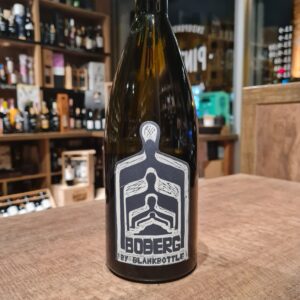 Pieter Walser from Blankbottle has got to be one of the most interesting, inspired, and avant-garde winemakers there is. His wine background mounts to college when he drove past a winery that had bottles with no labels on offer and he could only afford 3 cases. Went back and sold the 3 at a profit. That very moment started a fascinating story that would inspire any of us. As per his own words: “Moment of Silence predominantly comes from a farm in Wellington called Twyfeling. Boberg is situated on a farm right next to Twyfeling and literally looks onto the vineyards of Twyfeling. Now Twyfeling was owned by my direct family seven generations ago. So on the label it shows 7 generations with Boberg overlooking all seven generations of the Hauptfleisch family. 2015 was the first year that I bought the grapes from this Vineyard. The Farmer calls the vineyard BOBERG, which means “on top of the Mountain”. It was a neglected little vineyard, old bush vines with no irrigation. The farmer identified it as a site with potential and started with a restoration process. The vineyard grows in decomposed granitic soil in Wellington. The site is cooler than the others in the area.
Pieter Walser from Blankbottle has got to be one of the most interesting, inspired, and avant-garde winemakers there is. His wine background mounts to college when he drove past a winery that had bottles with no labels on offer and he could only afford 3 cases. Went back and sold the 3 at a profit. That very moment started a fascinating story that would inspire any of us. As per his own words: “Moment of Silence predominantly comes from a farm in Wellington called Twyfeling. Boberg is situated on a farm right next to Twyfeling and literally looks onto the vineyards of Twyfeling. Now Twyfeling was owned by my direct family seven generations ago. So on the label it shows 7 generations with Boberg overlooking all seven generations of the Hauptfleisch family. 2015 was the first year that I bought the grapes from this Vineyard. The Farmer calls the vineyard BOBERG, which means “on top of the Mountain”. It was a neglected little vineyard, old bush vines with no irrigation. The farmer identified it as a site with potential and started with a restoration process. The vineyard grows in decomposed granitic soil in Wellington. The site is cooler than the others in the area. -
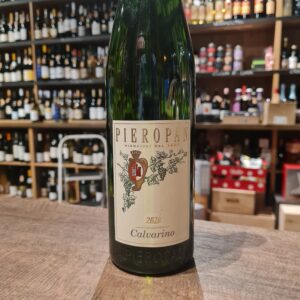 The history of this brand dates back to 1880, when this business was established in the Soave village in the reputed zone of Palazzo Pullici in Italy. Leonildo Pieropan, a physician from Soave, was well-aware of the potential of the soils in this region, because of his previous work experience in the family vineyards. He, along with his sons, Fausto and Gustavo, started working in the cellars in the 1950s and 60s to churn out impeccable quality, Italian wines that spoke a lot about the quality of their terroirs. Today, this business is run by the fifth generation of the Pieropan family, with the same dedication and winemaking philosophy. The Pieropan family believes in traditional winemaking principles. These are reflected in the way they maintain their vineyards. The local territory of these vineyards is given utmost importance and minimalistic intervention technique is followed in addition to organic viticultural practices. The three vineyards from where grapes are sourced for Pieropan wines are Calvarino, La Rocca and Garzon. Calvarino vineyard is the oldest of the three as it has been with the family since 1901. It is located right in the heart of the Soave area and is blessed with amazingly rich and fertile volcanic soils. It makes an excellent aperitif and partners a wide range of dishes, especially vegetable quiches, delicately-flavoured fish, shellfish and cheese soufflés
The history of this brand dates back to 1880, when this business was established in the Soave village in the reputed zone of Palazzo Pullici in Italy. Leonildo Pieropan, a physician from Soave, was well-aware of the potential of the soils in this region, because of his previous work experience in the family vineyards. He, along with his sons, Fausto and Gustavo, started working in the cellars in the 1950s and 60s to churn out impeccable quality, Italian wines that spoke a lot about the quality of their terroirs. Today, this business is run by the fifth generation of the Pieropan family, with the same dedication and winemaking philosophy. The Pieropan family believes in traditional winemaking principles. These are reflected in the way they maintain their vineyards. The local territory of these vineyards is given utmost importance and minimalistic intervention technique is followed in addition to organic viticultural practices. The three vineyards from where grapes are sourced for Pieropan wines are Calvarino, La Rocca and Garzon. Calvarino vineyard is the oldest of the three as it has been with the family since 1901. It is located right in the heart of the Soave area and is blessed with amazingly rich and fertile volcanic soils. It makes an excellent aperitif and partners a wide range of dishes, especially vegetable quiches, delicately-flavoured fish, shellfish and cheese soufflés -
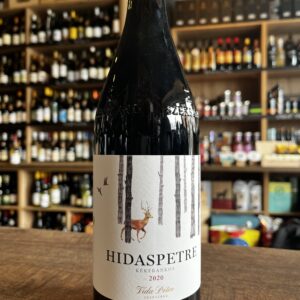 Single vineyard Kekfrankos from Szekszard. The valley of Hidaspetre is surrounded by forest, where the countryside is loud with the singing of birds at dawn. Our vineyard selection is an elegant and beautifully balanced wine with refreshing tannins. Soil: calcareous loess soil with red clay Cultivation method, load: low cordon, 40-50 hl/ha Harvest: September 22-24, 2020
Single vineyard Kekfrankos from Szekszard. The valley of Hidaspetre is surrounded by forest, where the countryside is loud with the singing of birds at dawn. Our vineyard selection is an elegant and beautifully balanced wine with refreshing tannins. Soil: calcareous loess soil with red clay Cultivation method, load: low cordon, 40-50 hl/ha Harvest: September 22-24, 2020 -
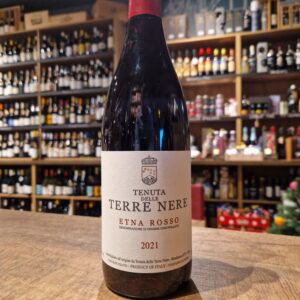
On the island of Sicily, at the foot of Mount Etna, brothers Marco and Sebastian De Grazia have been running their winemaking project for more than 30 years. At Tenuta Delle Terre Nere they make refined and pure wines that express the extraordinary location they call home. Starting with excellent raw materials and winemaking with very little intervention, the De Grazia brothers’ work has helped put Etna at the top of the world wine map.
Tenuta Delle Terre Nere Etna Rosso comes from both young and old vines that grow on the north slope of Mount Etna. These vines are planted in volcanic soil at an altitude ranging from 600 to 900 metres above sea level. Organic farming is practiced and the yield is limited to 35 hl. per hectare. The harvest is carried out manually at the optimum point of ripeness.
Pure and elegant, Tenuta Delle Terre Nere Etna Rosso is a red wine with the delicacy of a Burgundy and the length of a Pinot Noir. A true representative of a promising wine region.
Pair it with white meats, Pasta, Red meat, Rice dishes


